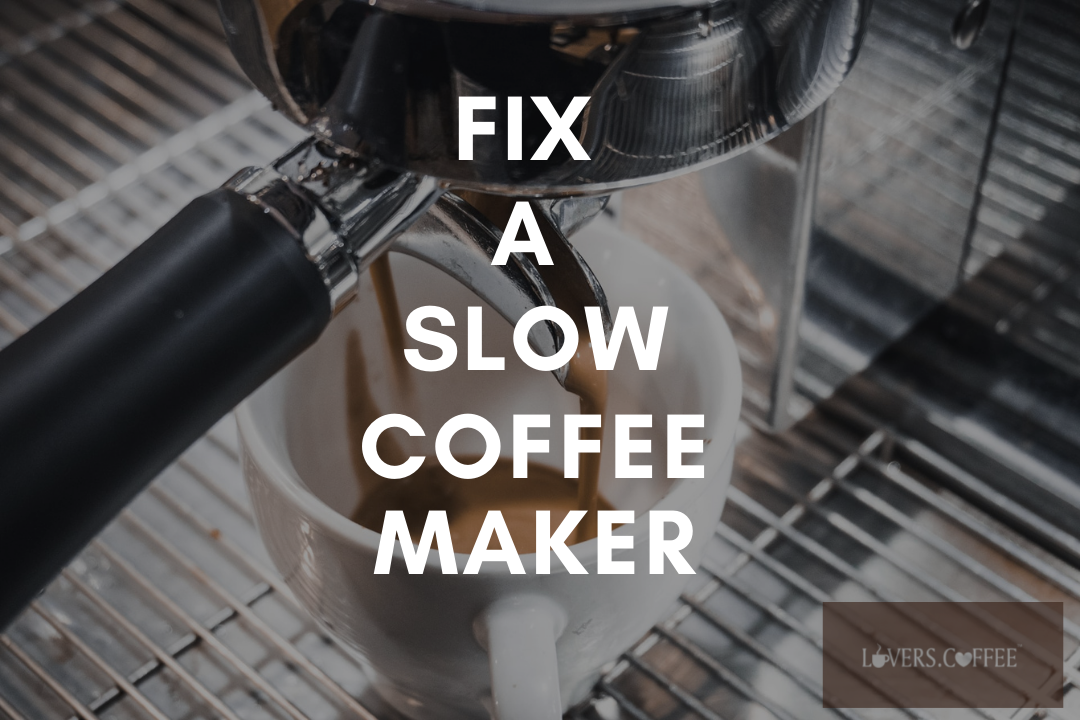
What to Do if You Have a Slow Coffee Maker?
Table of Contents
- Know the Signs of a Slow Coffee Maker
- The Water Doesn't Get Hot Enough
- The Coffee Doesn't Come Out Right
- Strange Smell of Taste of Water
- 1. Check for Clogs and Other Signs of Damaged Parts
- 2. Clean Up the Coffee Maker
- 3. Descale your Coffee Maker by Making a Vinegar Solution
- 4. Replace Broken Parts
- Does It Make More Sense To Replace The Machine Or Fix It Yourself?
- Conclusion
What to Do if You Have a Slow Coffee Maker?
- Adam Smith
- 12-05-2022
- 29-07-2025
- 1949 views
- Coffee Tips, Featured Articles, How To's, Information

You may be tempted to throw out your old, slow coffee maker and buy a new one, but it’s important to remember that coffee makers are built to last. In most cases, the problem is simple and easy to fix.
If you’ve recently bought a new coffee maker and are having problems with it, or if your old one has suddenly become sluggish (and maybe even underperforming), there might be some simple solutions that will help get things back on track in no time at all!
Know the Signs of a Slow Coffee Maker
-
The Water Doesn’t Get Hot Enough
If the water isn’t hot enough (about 200 degrees Fahrenheit) when it hits the grounds, they won’t be as saturated, and you won’t be able to extract as much flavor from them. This means that your coffee will be weak and bland.
-
The Coffee Doesn’t Come Out Right
When the water doesn’t get hot enough, the brewed coffee may come out too quickly or too slowly — either way, it won’t taste right because of this lack of heat. The temperature should be between 195 and 205 degrees Fahrenheit for optimal results.
-
Strange Smell of Taste of Water
Water comes out with a strange smell or taste. This could be because of a bacterial or mineral buildup in the tank that needs to be cleaned out with vinegar and baking soda.
Following are some easy fixes to give life to your slow coffee maker:
1. Check for Clogs and Other Signs of Damaged Parts
If your coffee maker is clogged, you may notice that the water does not flow through as it did before. In this case, remove any clogs and see if the water flows through normally. If it doesn’t, make sure that there are no cracks or holes in your water reservoir (this can also be caused by a cracked reservoir).
However, if it fails and none of these steps have helped improve your sluggish machine’s performance, it’s time to clean up the coffee maker!
2. Clean Up the Coffee Maker
The second step in fixing a sluggish coffee maker is to clean it. Remove the filter basket and wash the carafe, filter basket, lid, and inside of your coffee maker with warm soapy water. You can also use vinegar or lemon juice to clean off any residue that might be causing your coffee maker to run slowly. Make sure you rinse everything well before putting it back into place.
Clean up the coffee maker monthly by wiping down the outside with a damp cloth; do not use soap on this cleaning step! Most importantly: No matter how hard you try not to let dirt get into your machine’s inner workings, eventually something will happen—so try keeping some extra filters around just in case!
3. Descale your Coffee Maker by Making a Vinegar Solution
One of the simplest things to do when you want your coffee maker to work better is to descale it. To do this, mix 1 part vinegar with 2 parts water and pour into the water chamber. Run a brew cycle through the machine and repeat with plain water to rinse out any residue left behind by the vinegar solution.
4. Replace Broken Parts
If your coffee maker has a broken part, it might be time to get a new one. Read the manual and follow its instructions on how to remove parts. You can easily buy spare parts for your coffee maker from the manufacturer or its official store.
Does It Make More Sense To Replace The Machine Or Fix It Yourself?
There are pros and cons of replacing your coffee maker or fixing it yourself, depending on what kind of machine you have, its age, and whether or not there are any other problems with your machine besides just being slow. If the problem is simply slowness, it makes sense to fix it yourself, even if it means doing some research online before buying parts and taking your machine apart.
Conclusion
Don’t let your coffee maker suffer just because you don’t know how to fix it. This article has you covered with tips on fixing a slow coffee maker. However, if the process seems too involved, feel free to contact a coffee machine repair shop and have them take care of the problem for you.
However, if none of the above steps work for you, it is better to get a new one. But first, make sure to dispose of your old coffee maker properly by taking it to an approved recycling facility or putting it in your garbage can.























